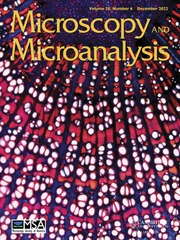Article contents
Microscopic and Spectroscopic Analyses of Pt-Decorated Carbon Nanowires Formed on Carbon Fiber Paper
Published online by Cambridge University Press: 06 August 2013
Abstract
We report the synthesis of carbon nanowires (CNWs) via chemical vapor deposition using catalytic decomposition of ethanol on nanosized transition metals such as Co, Fe, and Ni. Dip-coating process was used for the formation of catalytic nanoparticles, inducing the growth of CNWs on the surface of the carbon fiber paper (CFP). The liquid ethanol used as carbon source was atomized by an ultrasonic atomizer and subsequently flowed into the reactor that was heated up to a synthesis temperature of 600–700°C. Microscopic images show that CNWs of <50 nm were densely synthesized on the surface of the CFP. Raman spectra reveal that a higher synthesis temperature leads to the growth of higher crystalline CNWs. In addition, we demonstrate the successful decoration of platinum nanoparticles on the surface of the prepared CNWs/CFP using the electrochemical deposition technique.
- Type
- Research Article
- Information
- Copyright
- Copyright © Microscopy Society of America 2013
References
- 1
- Cited by




